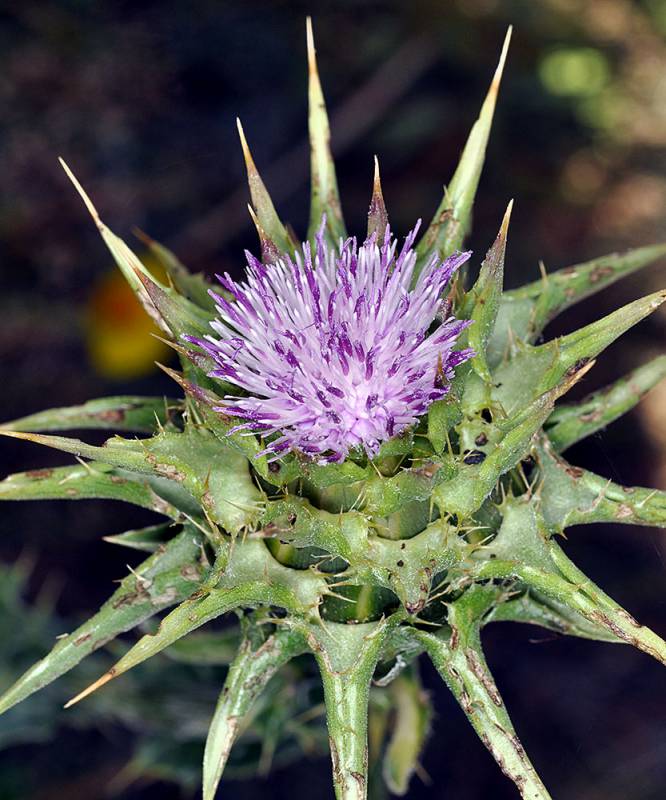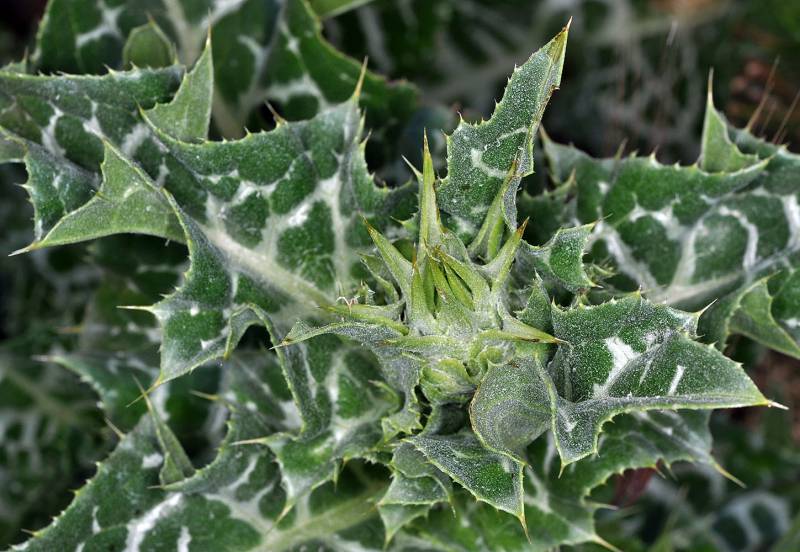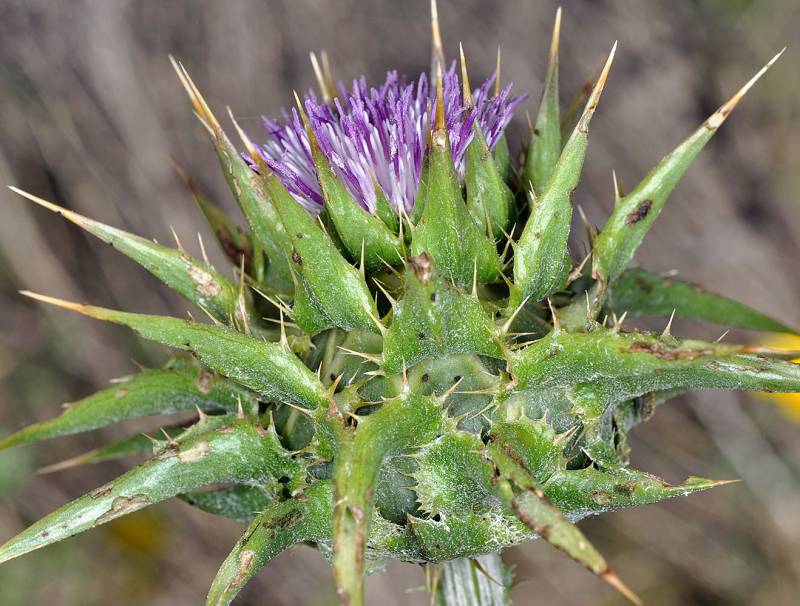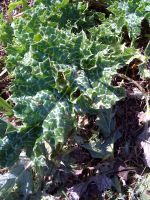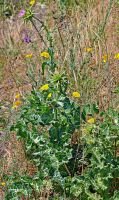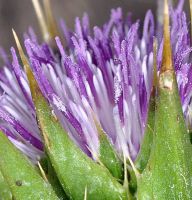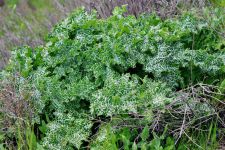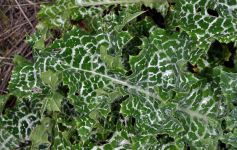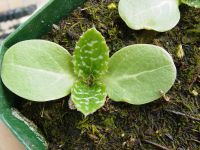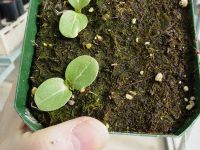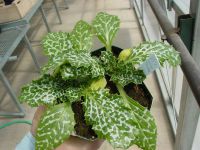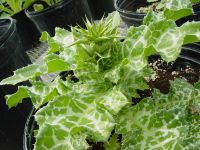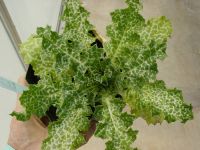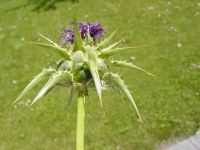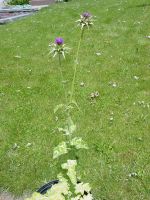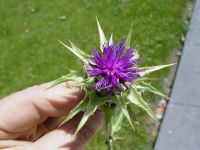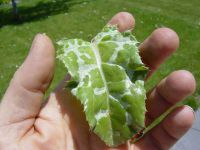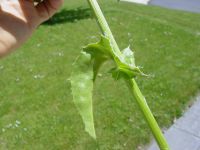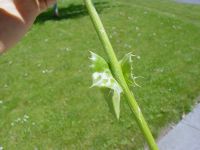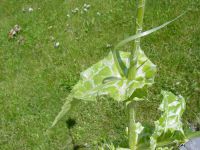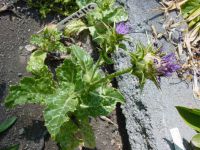Distribution: Occurring in scattered locations on both sides of the Cascades crest in Washington; British Columbia to California, east across Canada and the southwestern U.S. to eastern North America.
Habitat: Roadsides, fields, wastelots, and other disturbed areas.
Flowers: May-July
Origin: Introduced from the Mediterranean region
Growth Duration: Annual, Biennial
Conservation Status: Not of concern
Pollination: Bees, flies, beetles, wasps
Glabrous, herbaceous winter annual or biennial, spiny throughout, the stems 6-15 dm. tall.
Leaves pinnately lobed, up to 6 dm. long and 3 dm. wide, petiolate below, becoming sessile and clasping above, spiny margined, marked with white along the main veins.
Heads large, globose, terminating the branches; involucre bracts imbricate in several series, broad, firm, mostly spiny-margined and strongly spine-tipped, the coarse, spreading tips widened at the base; flowers all tubular and perfect; corollas purple, with slender tube and 5 long, narrow lobes; filaments glabrous, united at the base; receptacle flat, densely bristly; pappus of numerous, slender, unequal bristles.
Achenes flattened, glabrous, about 6 mm. long.
Publication: Fruct. Sem. Pl. 2: 378. 1791.
PNW Herbaria: Specimen records of Silybum marianum in the Consortium of Pacific Northwest Herbaria database
WA Flora Checklist: Silybum marianum checklist entry
OregonFlora: Silybum marianum information
E-Flora BC: Silybum marianum atlas page
CalPhotos: Silybum marianum photos

